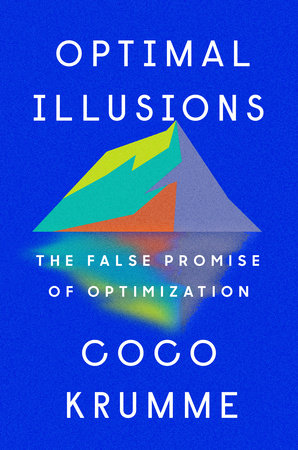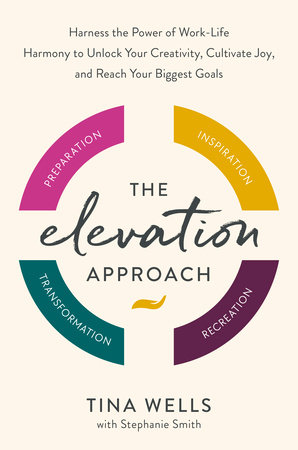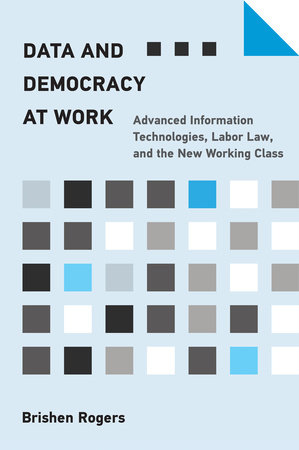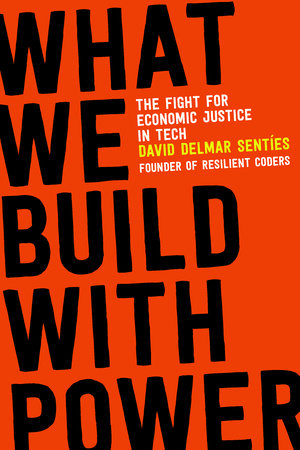FAQ
Q: What is the main focus of “The Secret of Culture Change”?
A: The book focuses on transforming organizational culture for enhanced performance and innovation.
Q: Who should read this book?
A: It’s ideal for business leaders, managers, HR professionals, and anyone interested in organizational development.
Q: Does the book provide practical advice for implementing change?
A: Yes, it offers actionable strategies for assessing, shaping, and sustaining cultural change in organizations.
Q: Can small businesses benefit from the insights in this book?
A: Absolutely. The principles outlined are applicable to organizations of all sizes.
Q: Is prior knowledge of organizational theory required to understand the book?
A: No, the book is written in simple language, making it accessible to readers without a background in organizational theory.
Q: Are real-world examples included in the book?
A: Yes, the book includes detailed examples from various organizations to illustrate key concepts.
Q: How does the book approach the role of leadership in culture change?
A: It emphasizes the importance of leadership and vision in driving and sustaining cultural change.
In Depth
Embracing Risk: A Pathway to Success
The first key idea in “The New Millionaire’s Playbook” by Gordy Bal is about embracing risk as a crucial step towards achieving extraordinary success. Bal argues that taking calculated risks is not just an option but a necessity for those aspiring to join the ranks of new millionaires. He emphasizes that risk-taking should be strategic, well-thought-out, and in alignment with one’s goals.
Bal starts by debunking the myth that all risk is inherently bad. He explains that avoiding risk often means missing out on significant opportunities. The book outlines how successful millionaires often differentiate themselves from the rest by their willingness to step out of their comfort zones and take chances that others might shy away from.
A detailed example from the book illustrates this point vividly. Bal narrates the story of a young entrepreneur, Sarah, who left a stable corporate job to start her own tech company. Despite the uncertainty and the high failure rate of startups, Sarah’s willingness to embrace this risk paid off. Her company, within three years, not only broke even but also secured a significant market share in a competitive industry. This story exemplifies how embracing risk can lead to substantial rewards.
Bal doesn’t suggest reckless risk-taking. Instead, he advocates for a balanced approach – assessing potential downsides and having a contingency plan. He introduces the concept of “risk budgeting,” which involves allocating a certain portion of resources (time, money, effort) that one is willing to risk for a potentially higher reward. This approach allows for a structured and less intimidating way to handle risk.
In discussing risk, Bal also touches upon the psychological aspects. He notes that the fear of failure is often a bigger obstacle than the actual risks involved. The book provides strategies to overcome this fear, such as focusing on long-term goals, seeking mentorship, and building a supportive network.
Bal eloquently summarizes this idea with a quote:
“In the world of high-stakes entrepreneurship, not taking a risk is the biggest risk of all. The new breed of millionaires understands that calculated risk-taking is a passport to extraordinary success.”
This key idea is central to the ethos of “The New Millionaire’s Playbook.” It serves as a reminder that success often lies on the other side of comfort. Bal’s insights encourage readers to reevaluate their relationship with risk and consider how embracing it can open doors to unprecedented opportunities and successes.
Leveraging Technology for Wealth Creation
The second key idea delves into leveraging technology as a powerful tool for wealth creation. It’s about using digital platforms and technological advancements not just for convenience, but as a primary strategy for building wealth.
This idea revolves around the notion that in today’s digital age, technology is not just a part of our lives; it’s a crucial asset for financial success. The book provides insights into how technology can be a game-changer in various aspects of wealth creation, from starting a business to investing and networking.
A compelling example in the book is the story of Mike, a real estate agent who revolutionized his business through technology. Initially, Mike’s business was traditional, relying on in-person meetings and paper listings. However, by embracing technology, he shifted to virtual tours, online marketing, and leveraging big data to understand market trends better. This shift not only expanded his customer base but also significantly increased his sales and overall efficiency. Mike’s story is a testament to how integrating technology can lead to substantial growth and success.
The book stresses the importance of staying updated with technological trends and being adaptable. It’s not just about using technology but continuously learning and evolving with it. This means being aware of the latest digital tools, understanding how they can benefit your business or personal finances, and not being afraid to implement them.
Another critical aspect discussed is the power of online networking and social media. The author emphasizes how digital networks can open doors to opportunities that were previously inaccessible. Social media platforms, professional networking sites, and online forums can be invaluable for connecting with mentors, investors, and potential partners.
The author encapsulates this idea with a striking quote:
“In the digital era, technology is not just a part of the millionaire’s toolkit; it is the workshop itself. Embracing and leveraging technology is non-negotiable for modern wealth builders.”
This key idea pushes the reader to think about technology not just as a daily convenience but as a strategic tool for wealth creation. It encourages a mindset shift from passive user to active innovator, leveraging technology’s immense potential to build and sustain wealth.
Building a Personal Brand
The next key idea focuses on the power of building a personal brand. It’s about creating a unique identity that resonates with your audience, setting you apart in the marketplace. This concept goes beyond just marketing products or services; it’s about marketing yourself as a brand.
The book underscores the importance of personal branding in the digital age. It explains that in a world crowded with competition, a strong personal brand can be your most valuable asset. It’s not just about what you offer but how you present it and what you stand for. This idea is crucial for entrepreneurs, freelancers, and professionals in any field.
A standout example from the book is the story of Emma, a freelance graphic designer. Initially, Emma struggled to attract clients and stand out in the competitive market. However, when she started focusing on building her personal brand, things changed. She crafted a unique narrative around her designs, infused her personality into her work, and consistently communicated her brand across social media and her website. As a result, she not only attracted more clients but also could charge higher rates because her brand resonated with a specific client base.
The book highlights several strategies for building a personal brand, such as understanding your unique value proposition, being authentic, and consistently conveying your brand message across all platforms. It’s about knowing your strengths, what you represent, and how you want to be perceived.
One insightful quote from the book encapsulates this idea:
“Your personal brand is the story you tell and the impression you leave. It’s your most powerful tool in a world where uniqueness and authenticity are the currencies of success.”
This key idea teaches that building a personal brand isn’t just about self-promotion; it’s about creating a connection with your audience. It’s about standing for something, having a clear message, and being consistent in your approach. By doing so, you not only attract the right opportunities but also build trust and credibility in your field.
Cultivating Financial Intelligence
The fourth key idea emphasizes the importance of cultivating financial intelligence. It’s about understanding money – not just how to make it, but how to manage, invest, and grow it wisely. Financial intelligence is crucial for long-term wealth creation and stability.
This concept is presented as more than just being good with numbers or understanding the stock market. It’s about developing a deep comprehension of financial principles, market trends, and investment strategies. The book advocates for continuous learning and staying informed about economic conditions and financial news.
An engaging example in the book is the story of Lisa, a small business owner. Lisa’s business was initially profitable, but she lacked financial savvy. She didn’t understand cash flow management or investment principles, which led to missed opportunities and financial strain during tough times. However, when Lisa started educating herself about financial management, everything changed. She learned about diversification, the importance of emergency funds, and smart investing. This newfound financial intelligence not only saved her business but also led to its expansion.
The book highlights that financial intelligence isn’t innate – it’s a skill that can be learned and honed. It covers topics like budgeting, saving, investing, and understanding financial risks. The author suggests setting aside time each week to read financial news, books, and even attending workshops or courses.
To underline the importance of this concept, the book includes a poignant quote:
“Financial intelligence is your greatest asset in the journey to wealth and security. It’s not about how much you make, but how much you keep and grow.”
This key idea drives home the point that making money is just one part of the wealth equation. The ability to manage and grow that money is what truly defines financial success. Cultivating financial intelligence is an ongoing process, but it’s essential for anyone looking to build and sustain wealth in the long term.
Networking and Collaboration
The final key idea revolves around the significance of networking and collaboration. It’s about understanding that success is often a team effort and that building strong, strategic relationships can be a catalyst for growth and opportunity.
This concept challenges the traditional notion of the solitary, self-made millionaire. Instead, it highlights the power of connections, partnerships, and community in the modern business landscape. The book stresses that networking isn’t just about collecting contacts; it’s about creating meaningful, mutually beneficial relationships.
A prime example in the book is the journey of Alex, a tech startup founder. Initially, Alex tried to handle everything solo, from product development to marketing. However, his breakthrough came when he began actively networking and collaborating with others in the tech community. Through these connections, he found a business partner, gained access to valuable resources, and expanded his customer reach. This shift in approach not only accelerated his company’s growth but also opened up new avenues for innovation and expansion.
The book offers practical tips on effective networking, like attending industry events, joining professional groups, and leveraging social media. It also emphasizes the importance of being genuine, offering value, and listening as much as talking in these interactions.
A quote from the book encapsulates this idea well:
“Your network is your net worth. In today’s interconnected world, collaboration and connections are the currency of progress.”
This key idea underscores the importance of viewing networking as an integral part of the success equation. It’s not just about what you know, but also who you know and how you can work together. Networking and collaboration are presented not as optional extras, but as essential strategies for anyone looking to thrive in today’s competitive environment.
Actionable Advice
- Embrace Calculated Risks: Identify opportunities where taking a well-thought-out risk could lead to significant rewards. Weigh the pros and cons before diving in.
- Integrate Technology: Utilize digital tools and platforms to enhance your business or personal brand. Stay updated with the latest tech trends.
- Develop a Personal Brand: Craft a unique narrative that reflects your values and strengths. Consistently communicate this brand across all platforms.
- Boost Financial Literacy: Regularly educate yourself on financial management, investment strategies, and market trends. Apply this knowledge to make informed decisions.
- Network Effectively: Attend industry events, join professional groups, and engage in social media networking. Focus on building meaningful, mutually beneficial relationships.
- Collaboration Over Competition: Seek partnerships and collaborative opportunities that can amplify your efforts and open new avenues for growth.
- Continuous Learning: Commit to lifelong learning and self-improvement. Stay curious and open to new ideas and approaches in your field.
- Stay Adaptable: Be flexible and ready to pivot strategies as the market or your circumstances change. Adaptability is key to sustained success.
About the Author
Gordy Bal is a renowned entrepreneur and author, celebrated for his innovative insights into wealth creation and personal development. Born and raised in a modest background, Bal’s journey to success is marked by perseverance and a keen understanding of the digital landscape. He holds a degree in Economics and has a rich history in tech startups, where he honed his skills in digital marketing and strategic planning. Bal is not just a businessman but also a passionate mentor, frequently speaking at conferences and workshops about entrepreneurship and personal growth. His work emphasizes the importance of risk-taking, technological adaptation, and personal branding in the modern economy. Bal strongly believes in the power of networking and collaboration, advocating for a community-driven approach to business. His writings often reflect his commitment to continuous learning and adaptability as cornerstones of success. Bal’s philosophy centers around the idea that financial freedom and success are accessible to everyone through smart strategies, resilience, and embracing change. His contributions extend beyond his books, influencing a new generation of entrepreneurs and thinkers.
Read These Next
You might like these similar books
- “Think and Grow Rich” by Napoleon Hill
- “Rich Dad Poor Dad” by Robert Kiyosaki
- “The 4-Hour Workweek” by Timothy Ferriss
- “The $100 Startup” by Chris Guillebeau
- “The Lean Startup” by Eric Ries
Read These Next
You might like these similar books
- “Think and Grow Rich” by Napoleon Hill
- “Rich Dad Poor Dad” by Robert Kiyosaki
- “The 4-Hour Workweek” by Timothy Ferriss
- “The $100 Startup” by Chris Guillebeau
- “The Lean Startup” by Eric Ries







